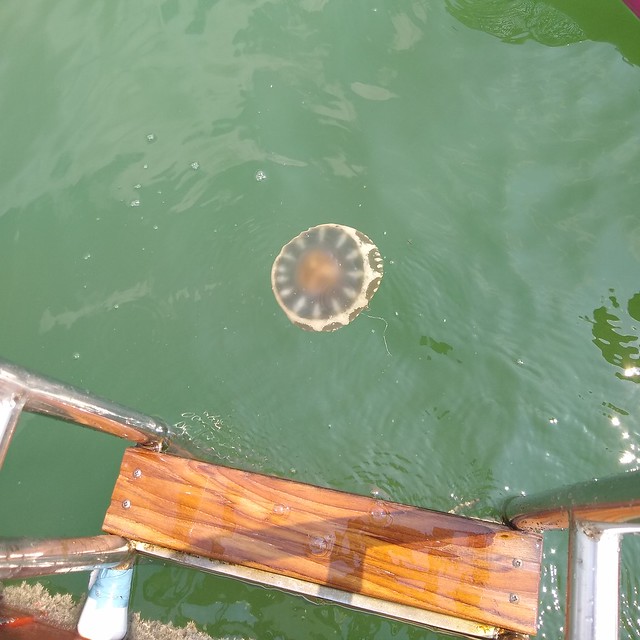Rachel caught a Cassiopeia in a net Saturday morning and put it in a bucket. She named it “Bob” and asked if we could keep it (not forever, just for a week). I told her it wouldn’t be happy in the bucket long-term, but that she could keep it for a few hours. To identify it, we looked it up in our beautiful reference book, Caribbean Reef Life: A Field Guide for Divers by Mickey Charteris and also read a few articles on the internet. We see these Upside Down Jellyfish all the time where we are in Florida, but today, we learned some surprising facts about them:
They photosynthesize and they eat. Like their fellow invertebrates, the corals, they have symbiotic algae (Zooxanthellae) that provide a food source and color. They also have many small mouths on their “arms” and ingest zooplankton…I guess that makes them omnivores!
They reproduce sexually and asexually. The adult males release sperm into the water that fertilizes ova produced by females. The larvae float in the sea until they find a place to land, where they become polyps, which reproduce asexually by budding. The adult phase is a medusa, which can sometimes be seen swimming, bell upwards, but…
They usually live upside-down, tentacles upward in warm shallow water. They make look like plants or underwater flower bouquets (the mangrove variety looks like it has seagrass growing out of it), but don’t be deceived, they are animals. They live in shallow water so that the sunlight can reach their zooxanthellae symbiotes. They come in a surprising variety of shapes and colors.
They sleep! A 2017 study discovered that even though these simple invertebrate life forms do not have brains or neurons, they have a nocturnal sleep phase. It has the researchers at Cal Tech scratching their heads.
They produce poisonous mucous that makes you itch! We discovered this firsthand, unfortunately. A recent study finally explained why swimming near upside down jellyfish can cause an itchy rash. They release a slimy substance that contains stinging nematocysts.
Even the simplest creatures on earth are surprisingly complex. The more I learn, the more I realize I know virtually nothing.
For more information on Cassiopeia:
https://www.livescience.com/upside-down-jellyfish-make-venomous-mucus-bombs.html
https://animals.howstuffworks.com/marine-life/do-jellyfish-sleep-brain.htm


